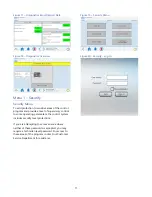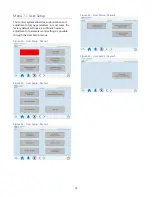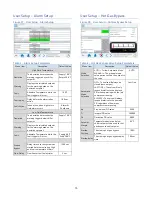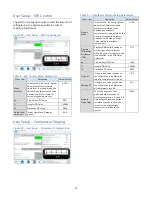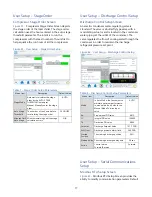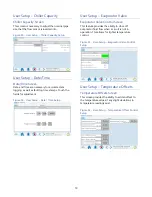
4
The temperature sensor comes from the factory with
a ½” NPT male fitting thermowell for direct
mounting in the field piping. Mount the temperature
sensor in a minimum pipe size of 3”. Wire the
temperature sensor to the designated primary chiller
electrical enclosure and land at the appropriate
terminal blocks within the enclosure. See the chiller
electrical schematic for further details.
Chiller Flow Sensor
This section only applies to installations when the
flow sensor option is present. In those situations, a
field-installed chiller flow sensor is required. Mount
the flow sensor in the process fluid supply piping in
an area of pipe with a minimum of 10 pipe diameters
of straight run after any valves or pipefittings. This
ensures the stream of fluid is solid and stable for
accurate flow measurement.
The flow sensor comes from the factory with a ½”
NPT compression fitting for direct mounting in the
field piping. Mount the flow sensor in a minimum
pipe size of 2”. Insert the stem of the sensor into the
compression fitting so the tip of the sensor is at the
approximate center of the pipe. The sensor requires
five pipe diameters of straight run piping on both
sides of the sensor. Wire the flow sensor to the
chiller electrical enclosure and land at the
appropriate terminal blocks with the enclosure. See
the chiller electrical schematic for further details.
Installation - Electrical
All wiring must comply with local codes and the
National Electric Code. Minimum circuit amps (MCA)
and other unit electrical data are on the unit
nameplate. A unit specific electrical schematic ships
with the unit. Measure each leg of the main power
supply voltage at the main power source. Voltage
must be within the voltage utilization range given on
the drawings included with the unit. If the measured
voltage on any leg is not within the specified range,
notify the supplier and correct before operating the
unit. Voltage imbalance must not exceed two
percent. Excessive voltage imbalance between the
phases of a three-phase system can cause motors to
overheat and eventually fail. Voltage imbalance is
determined using the following calculations.
% Imbalance = (Vavg – Vx) x 100 / Vavg
Vavg = (V1 + V2 + V3) / 3
Vx = phase with greatest difference from Vavg
For example, if the three measured voltages were
442, 460, and 454 volts, the average would be:
(442 + 460 + 454) / 3 = 452
The percentage of imbalance is then:
(452 – 442) x 100 / 452 = 2.2 %
This exceeds the maximum allowable of 2%.
There is a terminal block for main power connection
to the main power source. The main power source
should be connected to the terminal block through
an appropriate disconnect switch. There is a separate
lug in the main control panel for grounding the unit.
Check the electrical phase sequence at installation
and prior to start-up. Operation of the compressor
with incorrect electrical phase sequencing will result
in mechanical damage to the compressors. Check
the phasing with a phase sequence meter prior to
applying power. The proper sequence should read
“ABC” on the meter. If the meter reads “CBA”, open
the main power disconnect and switch two line leads
on the line power terminal blocks (or the unit
mounted disconnect). Do not interchange any load
leads that are from the unit contactors or the motor
terminals.
WARNING: This equipment contains hazardous
voltages that can cause severe injury or death.
WARNING: This equipment contains refrigerant under
pressure. Accidental release of refrigerant under
pressure can cause personal injury and or property
damage.

















